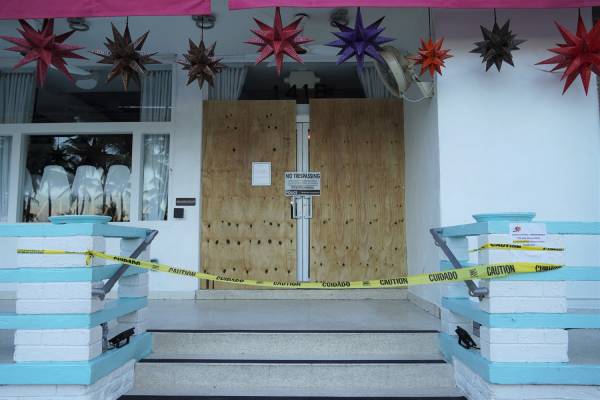Within the commercial real estate world, the term “net absorption rate” is a riveting metric for debt and equity investors as well as property and asset managers. However, in the lodging industry, it is not a term that is widely considered.
Contributed by Daniel Lesser, LW Hospitality Advisors, New York City
Net Absorption is the amount of occupied space at the end of a period less the amount of space occupied at the beginning of the same period. Net absorption accounts for space vacated as well as new additions (i.e., new construction) over the applicable period. Net absorption is calculated by using the formula of total vacant square footage at the beginning of a time period plus square feet constructed (or brought online) during the period, less square feet demolished or otherwise removed during the period, less square feet vacant at the end of the time period. For example, if a market has 1 million square feet of space and 50,000 square feet are leased while 20,000 square feet are vacated during the period and there is no new construction or demolition of existing properties, then the net absorption rate would equal 3% (50,000 SF leased less 20,000 vacated equals 30,000 SF net absorption divided by 1 million SF of total space).
While new additions to hotel supply are routinely considered by many market participants, others neglect to factor in permanent hotel closures. A silver lining of most lodging sector downturns are the everlasting deletions of lodging facilities that are physically, and/or functionally, and/or economically obsolete assets that are no longer financially viable enterprises. Examples include properties with improvements that are converted to such uses as: housing including multifamily, student, affordable, workforce, for the homeless, and senior living. Additionally, properties situated in desirable locations with improvements that have reached the end of their useful life are often demolished to make way for new residential condominiums, office buildings, healthcare related facilities, and mixed-use developments that include retail and in many cases a lodging component.
As part of the response to the COVID-19 pandemic, the State of California launched Project Roomkey, a first of its kind partnership with the Federal Emergency Management Agency (FEMA) to shelter individuals experiencing homelessness during the COVID-19 pandemic. To reflect an intent to ensure more permanent shelter and services, at the end of June 2020, the State renamed Project Roomkey to Homekey. Homekey has the financial backing of US$1.3 billion in funds available through the 2020-21 Budget Act and will facilitate local jurisdictions’ efforts in acquiring and rehabilitating hotels, motels, vacant apartment buildings, and residential care facilities.
During Fall 2020, King County in Washington State, which includes the cities of Seattle and Bellevue, introduced the Health through Housing initiative, which dedicates one-tenth of a cent of sales tax revenues for the purchase of hotels, motels, and other single room settings for use as emergency and permanent supportive housing for people experiencing chronic homelessness in the county.

Of the 248 single asset U.S. hotel sale transactions over US$10 million (LWHA Major U.S. Hotel Sales Survey) that have occurred since the beginning of 2020, 36 properties were acquired by private and governmental entities for conversion to an alternative use. These assets include more than 7,200 rooms sold for nearly US$1.5 billion in total sales volume.
- Noteworthy hotels that have been acquired under the Roomkey/Homekey program include the 146-unit Extended Stay America – San Jose Milpitas, California (US$445,000 per unit); the 192-unit Residence Inn by Marriott San Diego Mission Valley in California (US$349,000 per unit); the 95-unit TownePlace Suites by Marriott Redwood City Redwood Shores, California (US$308,000 per unit); the 33-room Ramada by Wyndham Marina del Rey, California (US$303,000 per unit); the 130-room Hotel Diva San Francisco, California (US$370,000 per unit); and the 144-unit Residence Inn by Marriott San Diego Central, California (US$274,000 per unit).
- Thus far during 2021, King County, Washington, has acquired the combined 232-unit Extended Stay America – Seattle – Federal Way and Extended Stay America – Seattle – Northgate (US$290,000 per unit); the 110-unit Extended Stay America – Seattle – Renton (US$260,000 per unit); the 80-room Inn at Queen Anne Seattle (US$206,000 per unit); the 144-unit Silver Cloud Inn – Redmond (US$196,000 per unit); the 99-room Holiday Inn Express & Suites North Seattle – Shoreline (US$177,000 per unit); the 95-room Clarion Inn Auburn Seattle (US$124,000 per unit); and the 90-room Red Lion Inn & Suites Federal Way, Washington (US$122,000 per unit).
Significant urban U.S. hotel assets that have sold:
- for conversion to an alternative use include, the 1,152-room Marriott Wardman Park Washington, D.C. (US$132,000 per key); the 223-unit Georgetown Suites Washington, D.C. (US$150,000 per unit); and the 259-room Fairfax at Embassy Row Washington, D.C. (US$224,000 per unit).
- for demolition to make way for mixed-use development include, the 197-room Salisbury Hotel New York City (US$660,000 per unit); the 178-room Sheraton Bellevue Hotel, Washington (US$871,000 per unit); the 102-room Americana Hotel Arlington, Virginia (US$441,000); and the 299-unit Residence Inn by Marriott Arlington Pentagon City, Virginia (US$497,000 per unit).
Announcement of the permanent closure of several major urban New York City assets include: the 102-year-old 1,704-room Hotel Pennsylvania; the 97-year-old 1,015-room Roosevelt Hotel; the 1,342-room Grand Hyatt; the 698-room Maxwell Hotel; the 636-room New York Marriott East Side; the 167-room Courtyard by Marriott New York Manhattan/Herald Square; the 876-room Hudson Hotel; the 480-room Novotel Times Square; and the 395-room Omni Berkshire Place.
Notable permanent hotel closures in other major U.S. cities include the 86-room Luxe Rodeo Drive Beverly Hills, California; the 139-key Standard Hollywood in West Hollywood, California; and the 132-room Hotel Buckminster in Boston, Massachusetts.
When new hotel supply enters a market, there is the potential for significant disruption at existing properties. However, net new hotel supply should also be considered as hotels that permanently close can appreciably reduce a disruption. Therefore, before reacting the next time you learn of a market glut of new lodging development, consider how many, if any existing stock may become deleted due to permanent hotel closures.

